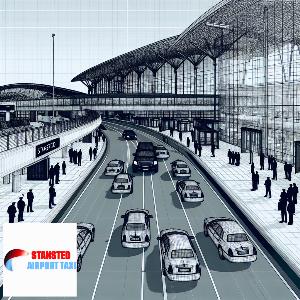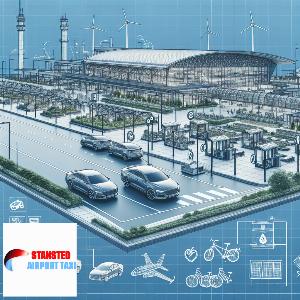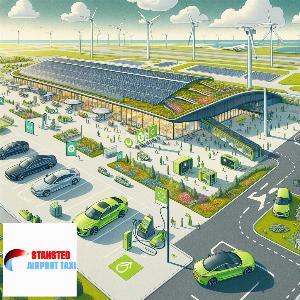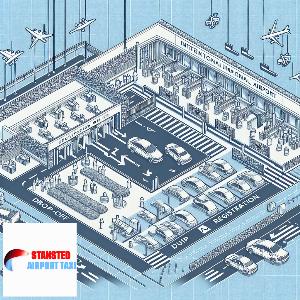The Role of Stansted Airport in Carbon Offset Projects

Stansted Airport's Carbon Offset Initiatives
Stansted Airport has been at the forefront of carbon offset initiatives, demonstrating its commitment to environmental sustainability. The airport has implemented several projects aimed at reducing its carbon footprint, including the use of renewable energy sources and energy-efficient technologies. One of its significant initiatives is the installation of solar panels on the terminal buildings, which generate clean, renewable energy. Additionally, Stansted has invested in electric ground handling equipment and encourages airlines to use fixed electrical ground power. The airport also promotes sustainable travel among its staff and passengers, offering incentives for using public transport. Furthermore, Stansted is part of the global Airport Carbon Accreditation program, which recognises its efforts in managing and reducing its carbon emissions. These initiatives not only contribute to the fight against climate change but also position Stansted as a leader in sustainable aviation. The airport's commitment to carbon offset projects underscores its role in promoting environmental responsibility within the aviation industry.
Impact of Stansted Airport on Environment
Stansted Airport, one of the busiest airports in the UK, has a significant impact on the environment, primarily through its carbon emissions. The airport's operations, including flights, ground services, and energy consumption, contribute to the global carbon footprint. However, Stansted Airport has taken proactive steps to mitigate its environmental impact through various carbon offset projects. These initiatives aim to balance out the carbon emissions produced by the airport by investing in projects that reduce carbon dioxide in the atmosphere. For instance, the airport has invested in renewable energy projects, energy efficiency programs, and tree planting initiatives. These efforts not only help to offset the airport's carbon emissions but also contribute to the broader goal of achieving carbon neutrality. Despite these efforts, it is crucial for Stansted Airport to continue exploring innovative ways to further reduce its environmental impact, given the growing concerns about climate change.
Stansted Airport's Sustainability Goals
Stansted Airport, one of the UK's busiest airports, is making significant strides towards achieving its sustainability goals. The airport is actively participating in carbon offset projects, aiming to become carbon neutral by 2030. This commitment is part of a broader strategy to reduce the environmental impact of aviation, which includes investing in renewable energy and improving energy efficiency. Stansted Airport is also working to reduce emissions from ground operations, such as by using electric vehicles and implementing more efficient baggage handling systems. Furthermore, the airport is engaging with airlines to encourage them to use more fuel-efficient aircraft. These initiatives demonstrate Stansted Airport's commitment to sustainability and its role in combating climate change. The airport's efforts are not only beneficial for the environment but also set a positive example for other airports and businesses to follow.
Carbon Offset Projects in Aviation Industry
Stansted Airport has taken a significant role in carbon offset projects within the aviation industry, demonstrating a commitment to environmental sustainability. Recognising the impact of aviation on carbon emissions, Stansted has implemented several initiatives to offset its carbon footprint. These include investing in renewable energy projects, improving energy efficiency in its operations, and supporting reforestation efforts. The airport has also introduced a carbon offsetting scheme for passengers, allowing them to compensate for the emissions produced by their flights. This initiative not only helps to reduce the environmental impact of air travel, but also raises awareness among passengers about the importance of carbon offsetting. Stansted's efforts in this area are part of a broader industry-wide push towards carbon neutrality, showing that the aviation industry is taking its environmental responsibilities seriously. Through its carbon offset projects, Stansted Airport is leading the way in sustainable aviation, setting an example for other airports to follow.
Government Regulations on Carbon Offset
The UK government has been implementing stringent regulations to reduce carbon emissions, and Stansted Airport has been at the forefront of these initiatives. The airport has been actively involved in carbon offset projects, aligning with the government's commitment to achieve net-zero carbon emissions by 2050. Stansted Airport has been investing in renewable energy sources, improving energy efficiency, and supporting sustainable aviation fuel projects. The airport is also part of the global Airport Carbon Accreditation scheme, which aims to reduce carbon emissions in the aviation industry. The government's regulations have played a crucial role in driving these initiatives, ensuring that Stansted Airport and other major contributors to carbon emissions are held accountable for their environmental impact. These regulations not only help to mitigate climate change but also promote sustainable growth in the aviation industry. Stansted Airport's efforts in carbon offset projects demonstrate the significant role that airports can play in achieving the UK's carbon reduction goals.
Role of Airports in Climate Change
Airports play a significant role in climate change due to the high carbon emissions associated with air travel. Stansted Airport, however, is taking steps to offset its carbon footprint. The airport has embarked on several carbon offset projects aimed at reducing its environmental impact. These initiatives include investing in renewable energy sources, implementing energy-efficient technologies, and promoting sustainable travel among its passengers. Stansted Airport is also working towards achieving carbon neutrality, a goal that involves balancing the amount of carbon released with an equivalent amount offset or sequestered. The airport's efforts are a testament to its commitment to sustainability and its role in combating climate change. By taking responsibility for its carbon emissions, Stansted Airport is setting a positive example for other airports and industries to follow. The fight against climate change is a collective effort, and every step taken towards reducing carbon emissions counts.
Technologies Used in Carbon Offset Projects
Stansted Airport has been actively involved in carbon offset projects, utilizing advanced technologies to reduce its carbon footprint. One of the key technologies used is the Carbon Capture and Storage (CCS) technology, which captures CO2 emissions from the source, transports them, and stores them underground. This technology has been instrumental in reducing the airport's carbon emissions significantly. Another technology used is the use of renewable energy sources. Stansted Airport has invested heavily in solar and wind energy, which are clean and sustainable sources of energy. This has not only reduced the airport's reliance on fossil fuels but also significantly reduced its carbon emissions. The airport also uses energy-efficient technologies in its operations. For instance, it uses LED lighting and energy-efficient appliances, which consume less energy and emit less CO2. Through these technologies, Stansted Airport has been able to play a significant role in carbon offset projects, contributing to the global efforts to combat climate change.
Public Perception of Stansted Airport's Carbon Offset Projects
Stansted Airport has been making significant strides in carbon offset projects, garnering public attention and appreciation. The airport's commitment to reducing its carbon footprint is evident in its various initiatives, such as the use of renewable energy sources and the implementation of energy-efficient technologies. The public perception of these efforts is largely positive, with many lauding the airport's proactive approach to environmental sustainability. Stansted's carbon offset projects not only contribute to the global fight against climate change but also set a commendable example for other airports and industries. The airport's role in these projects is pivotal, as it demonstrates the potential for large-scale operations to significantly reduce their environmental impact. The public's positive perception of Stansted's efforts is a testament to the effectiveness of these projects and the airport's commitment to sustainability.
Challenges in Implementing Carbon Offset Projects
Implementing carbon offset projects at Stansted Airport presents a unique set of challenges. The primary issue is the sheer volume of carbon emissions produced by the aviation industry, making it difficult to offset the entire amount. Additionally, the complexity of calculating the exact carbon footprint of each flight, considering factors like aircraft type, fuel efficiency, and flight distance, adds to the challenge. Moreover, the implementation of carbon offset projects requires significant financial investment. This includes the cost of developing and maintaining renewable energy projects or reforestation initiatives. The lack of a universal standard for carbon offsetting also poses a challenge, as it can lead to inconsistencies in how offsets are measured and reported. Despite these challenges, Stansted Airport is committed to playing a significant role in carbon offset projects. It recognizes the importance of reducing its carbon footprint and is actively seeking innovative solutions to overcome these obstacles. The airport's commitment to sustainability is a crucial step towards a greener future for the aviation industry.
Future of Carbon Offset Projects at Stansted Airport
Stansted Airport is poised to play a significant role in the future of carbon offset projects. As one of the UK's busiest airports, it has a significant carbon footprint. However, it is committed to reducing its environmental impact through various initiatives. The airport is investing in renewable energy sources, improving energy efficiency, and implementing innovative technologies to reduce emissions. It is also exploring carbon offset projects, which involve investing in environmental projects to balance out its own carbon emissions. These projects could include reforestation, renewable energy, or community-based projects in developing countries. The airport's commitment to carbon offsetting not only helps to mitigate its environmental impact but also sets a positive example for other airports and industries. The future of carbon offset projects at Stansted Airport looks promising, with the potential to significantly contribute to global efforts to combat climate change.
Our Latest Blog Posts

The Role of Stansted Airport in Sustainable Development
Stansted Airport plays a crucial role in sustainable development by implementing eco-friendly practices. It focuses on reducing carbon emissions, waste management, and promoting renewable energy, c ...

The Impact of Air Traffic Control on Stansted Airport
Air Traffic Control (ATC) significantly impacts Stansted Airport's operations, ensuring safe, orderly, and swift flights. ATC's efficient management of flight paths, takeoffs, and landings contribu ...

The Role of Stansted Airport in Crisis Management
Stansted Airport plays a crucial role in crisis management, providing emergency response and logistical support. Its strategic location and robust infrastructure make it a vital hub for coordinatin ...

The Environmental Initiatives of Stansted Airport
Stansted Airport is leading in environmental initiatives, implementing measures like waste recycling, energy efficiency, and noise reduction. Their commitment to sustainability is evident in their a ...

Stansted Airport: A Guide to the Offboarding Process
Stansted Airport ensures a smooth offboarding process for passengers. Clear signage guides you from the aircraft to immigration, baggage claim, and customs. Services like car rentals, public transp ...

The Role of Stansted Airport in Research and Development
Stansted Airport plays a crucial role in research and development, serving as a hub for testing innovative aviation technologies. Its commitment to sustainability and efficiency drives advancements ...

Stansted Airport: A Guide to the Selection Process
Stansted Airport offers a seamless selection process for travelers. With clear signage, efficient security checks, and a variety of airlines and destinations, it ensures a stress-free journey. Its ...

The Role of Stansted Airport in Green Building
Stansted Airport plays a significant role in green building, implementing sustainable practices in its infrastructure. It utilizes energy-efficient systems, promotes recycling, and reduces carbon e ...

Stansted Airport: A Guide to the Investigation Process
Stansted Airport's investigation process is a meticulous procedure ensuring safety and efficiency. It involves thorough checks, detailed analysis, and strict adherence to regulations, providing a s ...

The Impact of Airline Innovation on Stansted Airport
Innovations in the airline industry have significantly boosted Stansted Airport's operations. Enhanced technology, improved customer service, and efficient processes have increased passenger traffi ...

Stansted AirportA Brief History
Stansted Airport, located in Essex, England, has a rich history. Established in 1942 as a bomber base during World War II, it transformed into a commercial airport in 1966. Today, it serves over 28 ...

The Impact of Airline Virtualization on Stansted Airport
Airline virtualization has significantly impacted Stansted Airport, enhancing operational efficiency and passenger experience. It has streamlined processes, reduced costs, and improved data managem ...

The Impact of Airline Transformation on Stansted Airport
The transformation of airlines has significantly impacted Stansted Airport, enhancing operational efficiency and passenger experience. It has led to increased flight frequency, improved services, a ...

Stansted AirportA Guide to Duty-Free Shopping
Stansted Airport offers a delightful duty-free shopping experience. With a wide range of luxury brands, high-street favourites, and local products, it's a shopper's paradise. Enjoy tax-free prices o ...

The Role of Stansted Airport in Peacekeeping Operations
Stansted Airport plays a crucial role in peacekeeping operations, serving as a strategic hub for the deployment of troops and humanitarian aid. Its location and facilities make it an ideal base for ...

The Impact of Airline Excellence on Stansted Airport
Airline excellence significantly impacts Stansted Airport, enhancing its reputation and customer satisfaction. Superior airline services boost passenger traffic, stimulate economic growth, and fost ...
Blogs Pages
Stansted Airport: A Guide to the Negotiation Process

Blog about Stansted Airport: A Guide to the Negotiation Process...
Stansted Airport: A Guide to the Change Management Process

Blog about Stansted Airport: A Guide to the Change Management Process...
The Role of Stansted Airport in Energy Efficiency

Blog about The Role of Stansted Airport in Energy Efficiency...
The Impact of Airline Disruption on Stansted Airport

Blog about The Impact of Airline Disruption on Stansted Airport...
Stansted Airport: A Guide to the Rebooking Process

Blog about Stansted Airport: A Guide to the Rebooking Process...
The Impact of Airline Effectiveness on Stansted Airport

Blog about The Impact of Airline Effectiveness on Stansted Airport...
Stansted Airport: A Guide to the Termination Process

Blog about Stansted Airport: A Guide to the Termination Process...
Stansted Airport: A Guide to the Registration Process

Blog about Stansted Airport: A Guide to the Registration Process...





